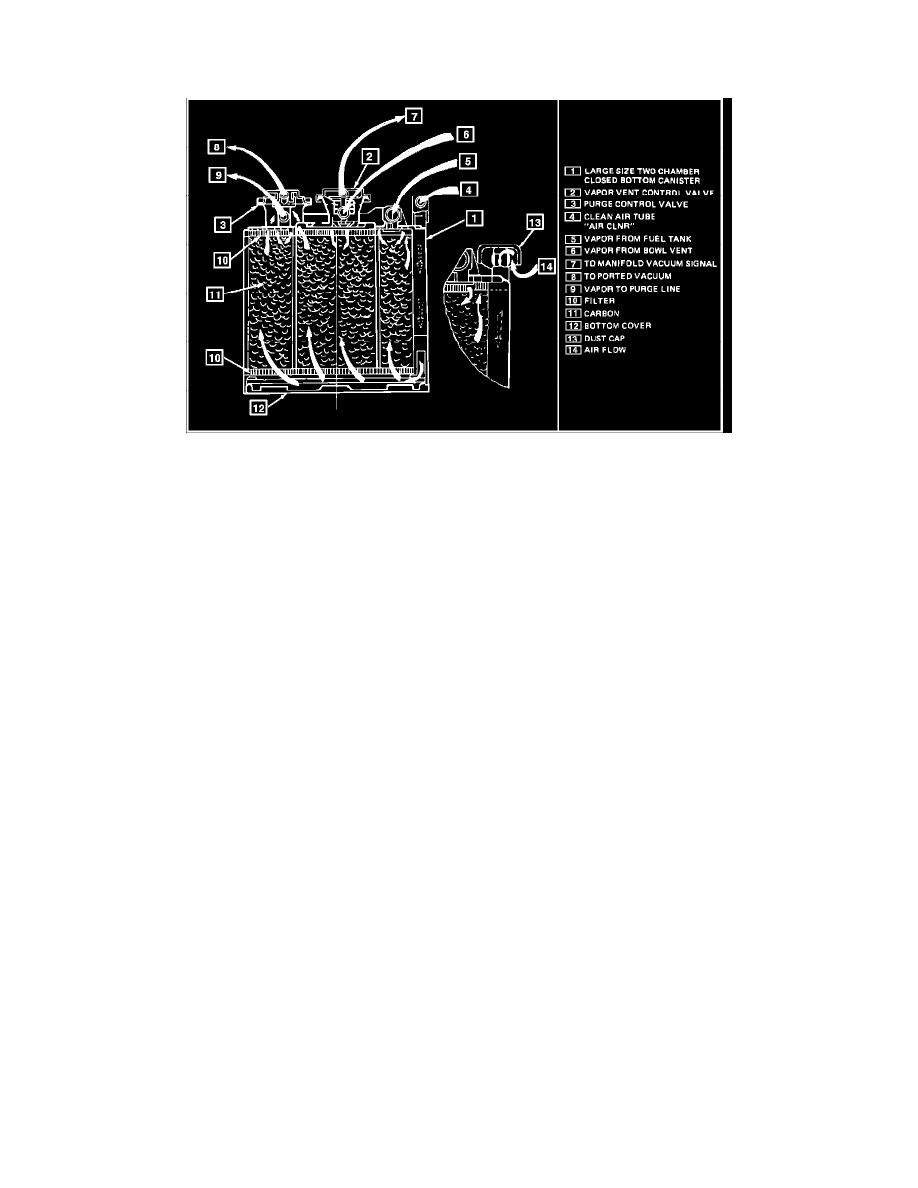V 2500 P/U 4WD V8-350 5.7L (1987)

Evaporative Emission Control Canister: Description and Operation
Purge Valve Type Vapor Canister
Fig. 63 Purge valve type canister. 1984-87 carbureted models
1984-87 Engines
This system Fig. 63, absorbs and stores fuel vapor in a carbon element until it can be removed and burned during normal combustion process. The
canister is equipped with a vapor bowl vent control valve and a canister purge control valve which are both mounted on the canister.
The bowl vent control valve operates as follows:
a.
When the engine is off, there is no vacuum through the vacuum signal tube to the valve diaphragm, spring tension opens the valve. Fuel vapors
formed in the carburetor float bowl are pressurized to the point where they flow from a tube in the carburetor float bowl through a connecting hose
marked ``Carb Bowl'' in the canister cover. Vapors travel past the open vent valve through the filter in the canister onto the activated charcoal,
where they are stored until purging of the canister occurs. When the engine is running, vacuum is supplied through a tube marked ``Man Vac'' to
the vent valve diaphragm. The diaphragm moves upward, raising the vent valve upward, against spring tension, allowing the valve to seal the
passage venting fuel vapors from carburetor float bowl to canister. When engine is stopped, spring tension opens the valve to allow venting of the
carburetor float bowl.
The canister purge control valve operates as follows:
b.
Fuel vapor is inducted into the engine and is controlled by an orifice in the purge control valve. Ported vacuum signals to the purge control valve
is controlled by a thermal vacuum switch (TVS) which delays purging until a specified engine temperature is reached. With throttle closed, the
purge control valve diaphragm is seated by spring tension and no purging occurs. With throttle opened, ported vacuum is applied to the purge
control valve. With vacuum applied to the diaphragm, the valve is opened when ported vacuum develops sufficient force to overcome preload of
the diaphragm closing spring and purging takes place until the throttle is closed to a position which reduces ported vacuum to a level at which it
can no longer overcome diaphragm spring tension.
